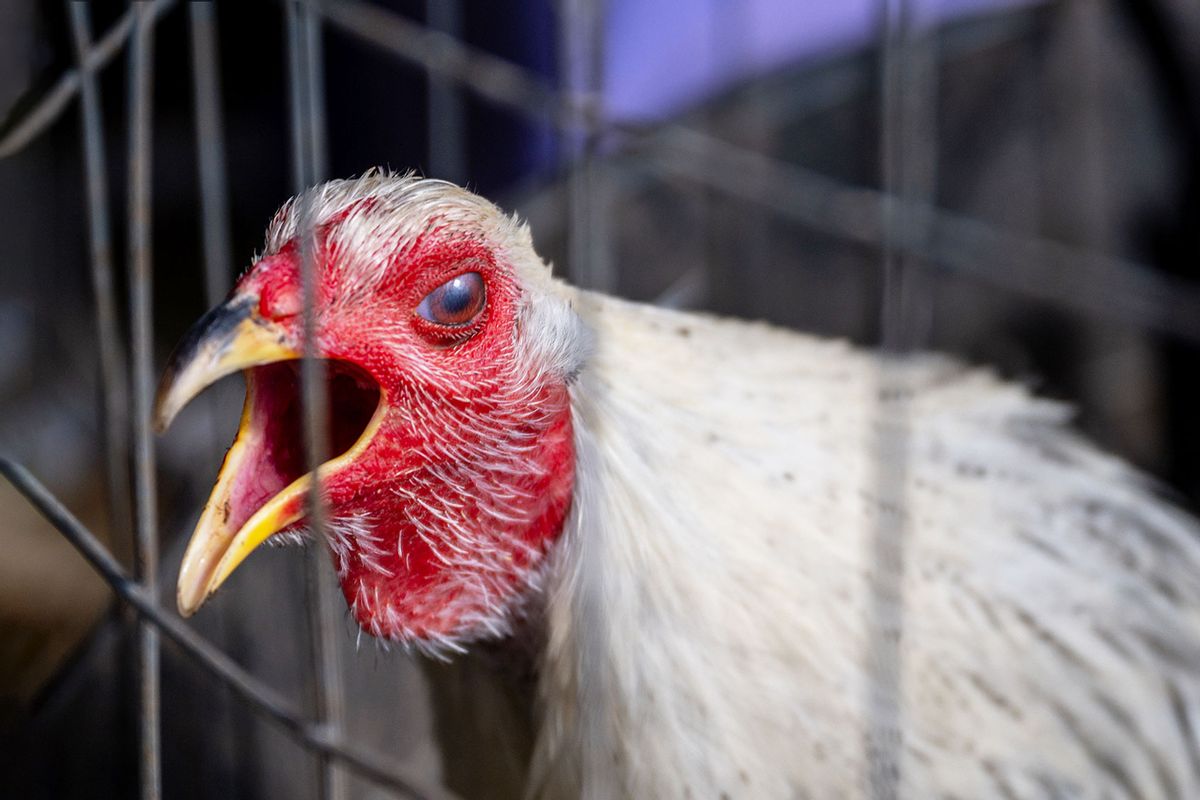Three months into 2025, over 30 million birds have been culled to control avian flu in the U.S. According to the USDA, the vast majority — 74% or over 22 million — were from battery cages this year. Continuing to raise animals in overcrowded conditions and relying on mass depopulation is an unsustainable and inhumane response. Industrialized animal agriculture has created this crisis, and we are all dealing with the consequences.
The primary U.S. response to avian flu is culling entire infected flocks, often through ventilation shutdown plus (VSD+), which kills animals by overheating them until their organs fail. Endorsed by the American Veterinary Medical Association (AVMA), VSD+ is an inhumane method that would be criminal if done to a pet. Veterinarians are now demanding the AVMA reclassify VSD+ as "not recommended."
Raising billions of animals in crowded, unsanitary conditions heightens the risk of pandemics. Scientists warn that the risk is rising. A new strain of avian flu, more deadly to humans, was detected in a broiler flock in Mississippi. This subtype has a nearly 40% mortality rate in humans. Bird flu is also spreading beyond poultry, affecting dairy cows, house cats, wild birds, and even seals, disrupting ecosystems.
While the U.S. relies on mass culling, other nations have developed more effective, humane strategies. Canada also culls but avoids extreme supply disruptions by not cramming as many animals into tight spaces. More than 30 countries—including China, France, and South Korea—have implemented vaccination programs to combat avian flu. These efforts have effectively reduced outbreaks and human transmission. As Abdel-Sattar Arafa of Egypt’s National Laboratory for Veterinary Quality Control on Poultry Production explains, "As long as the vaccine is updated and epidemiological surveillance is maintained, vaccines remain effective."
So why isn’t the U.S. using vaccines? The primary roadblock is opposition from the chicken meat industry.
Since 2022, avian flu has cost the industry billions, with taxpayer-funded bailouts supporting losses. Approximately 168 million birds have been culled. Implementing a vaccine program now could help slow the spread, minimize animal suffering, and stabilize consumer prices.
Vaccines are not a perfect solution, but they significantly reduce the severity and spread of avian flu. Vaccinated birds release far less virus, making transmission harder. Poultry vaccination also minimizes human exposure, particularly to strains that could adapt to humans. Yet, the federal response remains inadequate. Of the administration’s $1 billion avian flu response budget, only $100 million is allocated to vaccine research. Even after the USDA conditionally approved a promising vaccine, only 10% of response funding was directed toward research and implementation.
Want more health and science stories in your inbox? Subscribe to Salon's weekly newsletter Lab Notes.
Some critics argue vaccination could lead to virus mutations, but research suggests otherwise. Intensive agriculture itself is driving mutations. A study found that 95% of documented cases of mild avian influenza evolving into severe strains occurred in commercial poultry operations.
Like human flu vaccines, avian flu vaccines require ongoing updates and monitoring to remain effective. A successful program would combine vaccination with biosecurity measures such as PPE, restricted access, sanitation, ongoing surveillance, and early detection. Leading veterinary organizations, including the AVMA, support poultry vaccination. The United Egg Producers, representing 90% of U.S. egg farmers, has formally endorsed vaccination for both poultry and dairy operations. The evidence is clear: implementing a vaccine program is critical.
We need your help to stay independent
So why isn’t the U.S. using vaccines? The primary roadblock is opposition from the chicken meat industry. The National Chicken Council, representing broiler chicken farmers, fears that vaccinating U.S. flocks would trigger trade restrictions. Broiler meat exports generate $5 billion annually, and the industry prioritizes maintaining these trade relationships over disease prevention. This creates a direct conflict: egg producers need vaccines to protect their flocks, but meat producers resist due to economic concerns. As a result, the policy deadlock continues, leaving both birds and consumers vulnerable.
Accepting mass culling or reverting to even crueler farming practices is not a solution. Extreme confinement—where animals cannot fully stand, spread their limbs, or move away from sick and dying animals—only promotes disease spread. The evidence is clear: most birds lost to avian flu this year were kept in cages.
Consumers are demanding change, and corporations are responding, as seen in this year’s Cage-Free Eggsposé. Companies like Subway must be held accountable for following through on their commitments to higher welfare. For the sake of animals, public health, and the environment, we must push for a food system that prioritizes safety and sustainability over profit-driven confinement and cruelty.



Shares